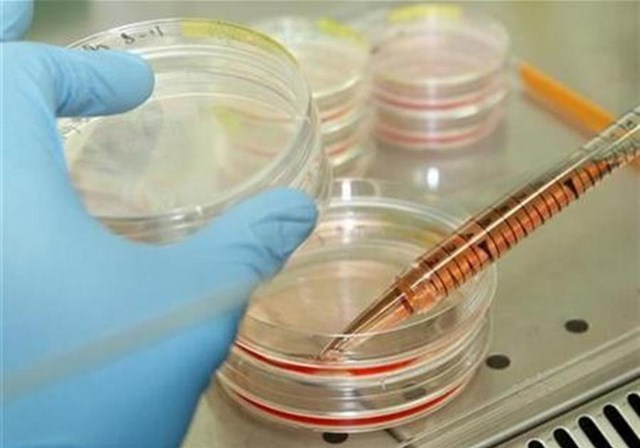
A researcher works with stem cells in a laboratory. (photo credit: Reuters)
Their findings were just published in the prestigious journal Nature Communications.
Tel Aviv University and Weizmann Institute of Science researchers have shown it is possible to turn mature cells from the heart, brain and other organs in mice models into skin cells.
Their findings, just published in the prestigious journal Nature Communications, proves for the first time that it is possible to repurpose the function of different mature cells across the body and harvest new tissue and organs from these cells.
“The applications of this are unlimited – from transplants, which would eliminate long waiting lists and eliminate the common problem of immune system rejection of ‘foreign’ organs; to maybe one day curing deafness: taking any cell in the body and transforming it into melanocytes to aid in the restoration of hearing. The possibilities are really beyond the scope of the imagination,” said Prof. Carmit Levy of the TAU Sackler School of Medicine’s human molecular genetics and biochemistry department.
The study was led jointly by Levy and Dr. Jacob Hanna of the Weizmann’s molecular genetics department.
Generating an entire genetically manipulated mouse is new and affords a scientific breakthrough that may save lives in the future, Levy suggested. “Future developments based on this method may enable the transformation of one tissue taken from the patient’s own body into another tissue to replace the damaged organ, for example. Curing hearing loss is also a promising direction for this research, because melanocytes are essential to our auditory system.”
The team tracked the transformation of genetically manipulated cells into melanocytes, which are responsible for the production of the pigment in the skin that is also vital to the body’s auditory system. “When cells develop, they differentiate into different organs with varying functions – bone, intestine, brain and so on,” said Levy. “Our study proves, for the first time, that this process is not irreversible. We can turn back the clock and transform a mature cell that already plays a definite role in the body into a cell of a completely different kind.
The scientists took cells from different parts of the mouse – stomach, intestine, connective tissue, heart and brain – and placed them in a solution activating the genetic switch MITF (microphthalmia-associated transcription factor), which is responsible for the production of melanocytes. Through this method, a stomach cell was turned into a skin cell.
“All of our genes are in all our cells, but genetic mechanisms allow them to manifest in the appropriate place while remaining dormant everywhere else,” explained Hanna.“Each cell has a kind of ‘switch.’ We activated the MITF switch to create melanocytes from cells designated for other purposes.”
